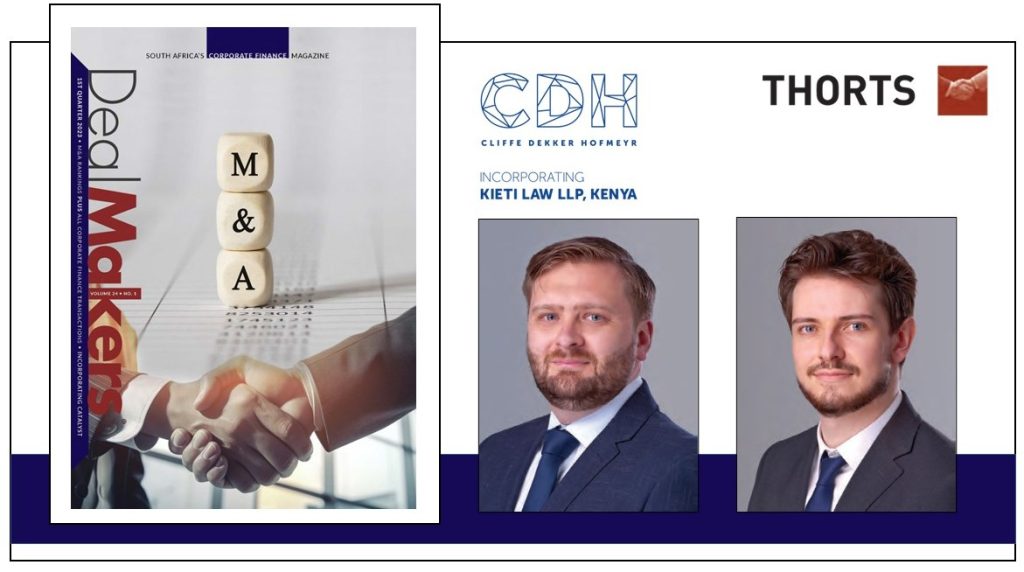The takeover of companies is a highly regulated process. This article focuses only on oversight over disclosures made by potential offerors or targets.
In the UK, the Takeover Codes allow for two types of disclosures to be made prior to a formal offer, namely voluntary possible offer announcements and mandatory possible offer announcements. A mandatory possible offer announcement is required when, inter alia, a company “is the subject of rumour and speculation or there is an untoward movement in its share price”. Few details are provided as the announcement is aimed at subduing speculation. On the other hand, a voluntary possible offer announcement allows an offeror or a target to test the waters of the market through a public announcement that a potential takeover may be on the cards. The Takeover Codes require this announcement to identify the potential offeror and state the “put up or shut up” deadline (the date by which the potential offeror must either make an offer or announce that it no longer intends to make an offer).
The UK’s Takeover Codes, therefore, allow a potential offeror to voluntarily announce a potential takeover before making a firm offer. However, does South African law allow the same? In a recent ruling, the Takeover Special Committee (Committee) discussed public statements made before a firm offer in South Africa. Caxton & CTP Publishers and Printers Limited (Caxton) made certain public statements as to its intent to acquire control of Mpact Limited (Mpact), an acquisition that would be subject to the Takeover Regulations. Unhappy with these public statements, Mpact approached the Takeover Regulation Panel (TRP) and the TRP prohibited Caxton from making any further public statements about the acquisition in any form without the prior approval of the TRP under Regulation 117 of the Takeover Regulations. Caxton appealed to the Committee, claiming that Regulation 117 does not apply to an announcement of an objective to acquire securities in a manner that might constitute an affected transaction. It argued that there was not “even a proposed deal on the table” as it had made no offer, nor proposed a purchase price, and its statements clearly indicated that any offer was dependent on competition approval. According to Caxton, Regulation 117 only applies to documents that relate to the offer to acquire shares or the acquisition itself.
The Committee began by setting out the two stages of an affected transaction regulated by the Takeover Regulations – the pre-firm offer stage and the post-firm offer stage. The following principles arising from Regulations 95, 99 and 100 apply to the pre-firm offer stage –
(i) an approach may only be made to the target’s board;
(ii) all pre-firm offer negotiations are confidential and leaks of price sensitive information must immediately be disclosed in a cautionary statement (a statement that urges security holders and the marketplace to exercise caution when trading the securities of the target);
(iii) confidentiality may only be broken to make a cautionary statement or a firm intention announcement, both of which fall within the oversight of the Takeover Regulations; and
(iv) the target’s board is the gatekeeper that must satisfy itself that the potential offeror is ready, willing and able to commit to the offer.
On the other hand, post-firm offers are governed by Regulations 117 and 111(8). Regulation 111(8) also applies to any statement that, while not necessarily factually inaccurate, may create uncertainty or mislead security holders. Clearly, no communication falls beyond the reach of the Takeover Regulations where it either signals an approach with a view of an offer being made (a pre-firm offer communication) or where it is made following an announced firm offer (a post-firm offer communication).
The Committee held as such:
(1) Caxton’s statements, although undeveloped, conveyed a clear and unambiguous declaration of its intent to eventually acquire control of Mpact through an affected transaction.
(2) It was also made in the context of a collapsed negotiation with Mpact’s board after it refused to co-operate with Caxton to file a joint merger notification. Caxton had failed to convince Mpact’s board, the gatekeeper to the transaction, that it was ready, willing, and able to implement a proposed offer.
(3) Therefore, its impugned announcement to the market, which subjected Mpact to speculation without a firm offer on the table, conflicted with the principles and spirit of the Takeover Regulations.
(4) The prohibition on Caxton should not have been sourced in Regulation 117, which applies to cautionary announcements that are made during the pre-firm offer stage, but rather regulations 99(1), read with regulation 95 and 100, in that it did not respect the role of the board as the gatekeeper, it did not maintain confidentiality, and it did not disclose the leak of price sensitive information as a cautionary statement.
(5) Regulation 117 does not apply to verbal statements, but Regulations 99(1), 95 and 100 apply to both oral and written statements during both the pre-firm offer and the post-firm offer stages.
Therefore, in South Africa, until we have direction otherwise, there appears to be no space for possible offer statements. Any announcements in the pre-firm offer stage would only be permitted in the form of a cautionary statement following a leak of price-sensitive information. Silence is golden then, it seems.
Brian Jennings is a Director and Keagan Hyslop a Candidate Attorney in the Corporate & Commercial practice | Cliffe Dekker Hofmeyr.

This article first appeared in DealMakers, SA’s quarterly M&A publication.
DealMakers is SA’s M&A publication.
www.dealmakerssouthafrica.com



